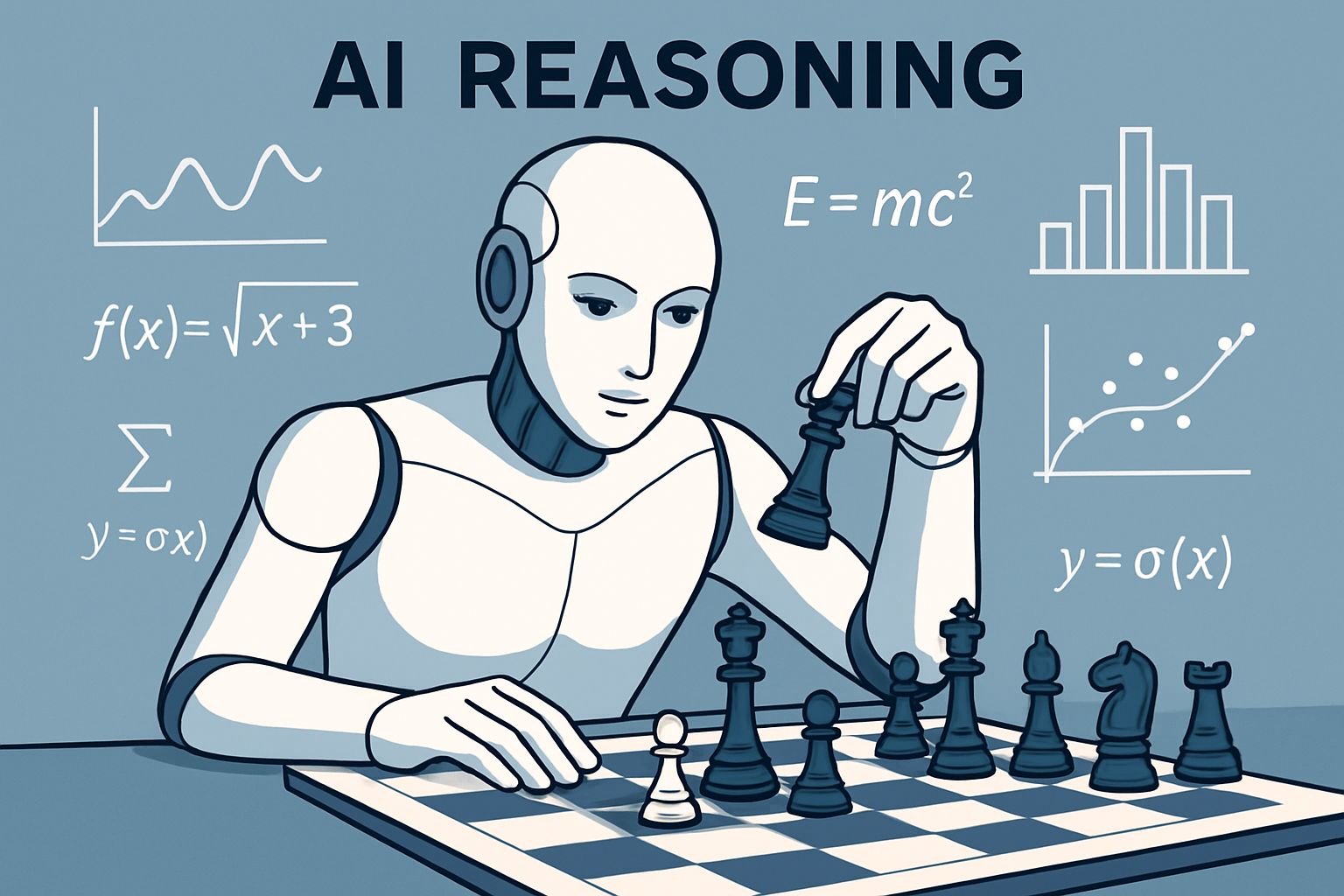
AI CERTS
2 days ago
OpenAI o1 Raises AI Reasoning Bar
Moreover, the story extends beyond a single score. It touches on Mathematical AI progress, evolving Benchmarking practices, and the ongoing debate over transparency. The following sections unpack each dimension in depth while maintaining tight, jargon-light prose.

Milestone In AI Reasoning
OpenAI announced the o1 “reasoning” family on 12 September 2024. The company emphasized that the model “thinks before it answers.” The headline number was a 94.8% pass@1 on MATH, a dataset of 12,500 competition problems. Therefore, many observers framed the achievement as a step-change in AI Reasoning.
Key comparative scores underline the jump:
- MATH pass@1: o1 – 94.8%; GPT-4 – 42.4% (2023 figure)
- AIME pass@1: o1 – 74.4%; consensus-based – 83.3%
- Codeforces Elo: o1 – ≈1,673, ranking near the 89th percentile
- GPQA-diamond: o1 exceeded recruited PhD experts
Nevertheless, headline metrics alone rarely capture model depth. These numbers mark an impressive peak, yet they prompt new scientific and commercial questions. These questions will guide the next sections.
These statistics confirm a capability surge. However, they also foreshadow concerns addressed below.
Key Training Techniques Used
The o1 team relied on three mutually reinforcing methods. Firstly, reinforcement learning rewarded long internal chains of thought. Secondly, the system ran extended inference passes, allowing more computation per query. Thirdly, a learned scorer re-ranked up to 1,000 samples, choosing the most plausible answer.
Additionally, OpenAI shielded raw reasoning traces from users. Instead, a summarizer provides sanitized thought outlines. In contrast, Google and Anthropic sometimes expose limited chains of thought for research partners. OpenAI argues that concealment reduces misuse risk.
Furthermore, the firm promotes ambitious applications. Scientific hypothesis generation, advanced tutoring, and secure code synthesis feature prominently in launch materials. Each use hinges on robust AI Reasoning under noisy, real-world conditions.
These tactics reveal actionable lessons for builders. Consequently, rival labs are already experimenting with similar compute-heavy pipelines.
Benchmark Saturation Concerns Rise
Dan Hendrycks, creator of MATH, noted that top models have “crushed” many established tests. Omni-MATH and MATH-P therefore introduce harder, adversarial variants. Perturbation trials drop o1-mini accuracy by roughly 16 percentage points.
Moreover, researchers warn of dataset contamination. Training corpora may include near duplicates of benchmark items. Subsequently, perfect scores might signal memorization rather than genuine Mathematical AI understanding.
Meanwhile, Benchmarking norms are shifting. New leaderboards emphasize robustness under problem rewrites, unseen domains, and limited compute budgets. OpenAI states that future releases will engage with these tougher regimes.
These developments highlight validity gaps in current metrics. However, they also motivate creative test design discussed next.
Competing Research Responses Emerge
Several independent teams have reacted swiftly. The rStar-Math project showed that smaller open models can approach o1 on MATH by synthesizing training data and performing exhaustive search at inference. Consequently, performance ceilings appear more accessible than once thought.
Additionally, Anthropic’s Claude and Google’s Gemini groups report internal advances on Olympiad-level tasks. Although public numbers remain scarce, early rumors suggest narrowing differentials.
Furthermore, open benchmarks gain contributors daily. The Omni-MATH authors invite community submissions and publish evaluation scripts. Such openness contrasts with OpenAI’s guarded approach and boosts Benchmarking transparency.
These rival efforts intensify competitive pressure. Nevertheless, collaboration opportunities for shared safety research also expand.
Business And Safety Impacts
For enterprises, improved AI Reasoning unlocks higher value workflows. Automated theorem checking, quantitative research assistance, and complex scheduling illustrate early pilots. Moreover, robust Mathematical AI could streamline financial modeling and drug discovery.
However, dual-use risks grow. Malicious actors might leverage advanced reasoning to compromise cryptographic schemes or craft disinformation. Therefore, governance frameworks must evolve alongside capability gains.
Additionally, transparency disputes persist. The Information criticized OpenAI for hiding raw chains, complicating third-party audits. In contrast, independent labs advocate publication of anonymized logs to facilitate red-team review.
These tensions underscore the importance of balanced policy. Consequently, regulators are watching benchmark claims ever more closely.
Future Testing Directions Ahead
Researchers propose several next steps. Firstly, cross-benchmark suites combining math, code, and science problems will test generalization. Secondly, limited compute settings will penalize brute-force sampling. Thirdly, perturbed item evaluation will expose memorization.
Moreover, peer-reviewed replication studies are critical. Shared evaluation seeds, prompt templates, and scorer code should accompany leaderboard claims. Consequently, community trust will improve.
Professionals seeking to contribute can upskill rapidly. They may pursue the AI Developer™ certification to gain hands-on experience with training pipelines that enhance AI Reasoning.
These proposals aim to future-proof assessment protocols. However, successful adoption will rely on sustained cross-industry cooperation.
Talent Upskilling Pathways Forward
Demand for reasoning-centric engineers is rising. Universities now add dedicated courses on chain-of-thought prompting and stochastic search. Meanwhile, enterprises run internal bootcamps that pair data scientists with domain experts.
Additionally, public-private partnerships fund open evaluation centers. These hubs offer forks of Omni-MATH and tooling for reproducible Benchmarking. Consequently, early-career researchers gain valuable portfolios.
Moreover, certification routes shorten learning curves. Beyond the previously noted credential, specialized programs in Mathematical AI systems design are emerging across Europe and Asia.
These pathways widen the talent funnel. Nevertheless, ongoing mentor support will remain essential for workforce readiness.
Conclusion
OpenAI’s o1 model signals a dramatic leap in AI Reasoning, yet the journey is far from complete. Moreover, benchmark saturation, transparency gaps, and safety dilemmas demand collective vigilance. Developers, executives, and policymakers must engage with evolving Benchmarking standards and invest in relevant skills. Therefore, explore certifications and community projects now to stay ahead of the rapidly changing frontier.



